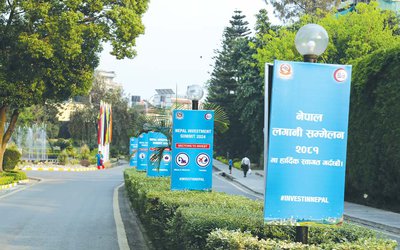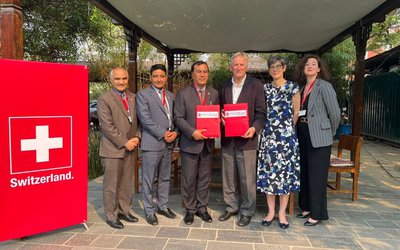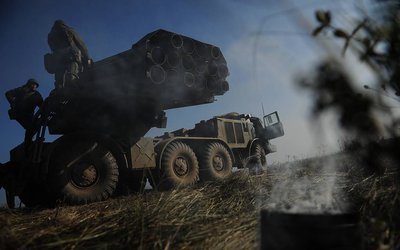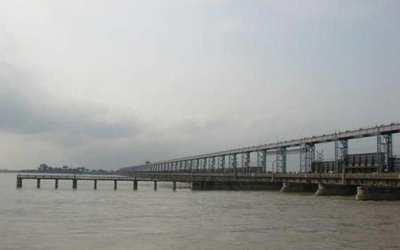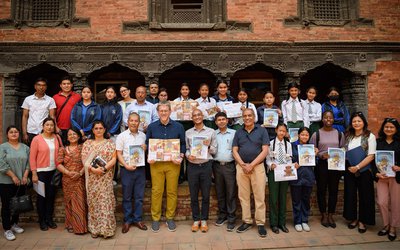
The world at large may not take notice of the one-day general election in Nepal today (November 20) but a country that is located strategically and is vulnerable to outside pressures and manipulation never truly loses its importance. Nepal’s two powerful and competing neighbours have undiminished interests in the country and enjoy fluctuating levels of trust. The United States, now often referred to as a “distant neighbour”, will also be interested in the election as it will spell out how stable Nepal’s politics will be in the time to come. Depending on which party leads the new government – and may well be a mixed-ideology coalition — the larger political stakeholders will perhaps need to review their policies and cultivate emerging power centres.
India, which has traditionally been a dominant factor in Nepal’s politics, will have much to be concerned about.
The monarchy ruled as more or less an absolutist power from 1951-1990, with the brief 18-month exception in starting mid-1960 when the country had its first elected government. This was followed by the 1991-2005 phase of multi-party democracy, when the monarchy had a constitutional role. After that, came the Republic and the left-dominated phases. The latter may have a sort of consistency abroad, including in Indian foreign policy circles, but the different and contradictory orientation of three dominant forces in Nepal — the Maoists, other communist parties and Nepali Congress — also make the external world suspicious.
India has indicated that it will be cautiously watching the electoral outcome. It has said so earlier as well, but this time the words seem more sincere as they are matched by a lack of visibility on the ground. The decline of Madhes-centric forces and parties that India credited as the force for the five-month-long border blockade after the last elections (2017), which brought Nepal-India relations to a low ebb, may not make New Delhi happy. Worse, some of them have joined the alliance led by K P Oli, the man India is likely uncomfortable dealing with for reasons that are now well-known. Oli, chief of the Communist Party of Nepal-United Marxist Leninist, is a potential prime minister in case his alliance — pitted against the one comprising the Nepali Congress and Maoists — wins. Oli, who started his election campaign from Darchula, has stated that he will bring Kalapani, Limpiadhura and Lipulek under Nepal’s control.
India lost its traditional allies in Nepal — first the monarchy and then Nepali Congress after New Delhi backed the Maoists (calling them true representatives of the future of Nepal) and recently, Madhes forces. The Indian backers of the radical changes in Nepal and their supporters in academia from both countries succeeded in bringing the Maoists— then with an official “terrorist” tag – to the centre of power and politics in Nepal in 2006. Side by side, a narrative was created that the Tarai region — with around 51 per cent population and 17 per cent of the area — was a sort of “colony” of the hill-origin rulers and needed to be “liberated”.
The Indian narrative was incorrect as it was based on a belief that the entire Tarai was a homogenous “Indian-origin” entity. This ignored its diversity in terms of ethnicity and caste, including affinities with Bihar and Uttar Pradesh. It also ignored the internal competition and rivalry in the region. The fact that the ancient Janakpur — a Ramayan-era city – and a huge stretch of Mithila was partly in the Tarai is evidence of a common heritage, culture and ancestry. But this does not mean that these regions are the political responsibility of either nation, crossing borders.
India’s unprecedented level of involvement in the Tarai, along with the rest of Nepal, and the presence of the western countries in identity and ethnicity-based politics in the post-monarchy phase made Beijing more suspicious than ever. As a result, China enlarged its presence, investment and counter-diplomacy vis a vis India and the West in Nepal.
The years that followed saw radical and violent movements in the Tarai region, with some demanding the right to secede. The perceived Indian blockade and visible social and political divide between the hills and the plains, often exacerbated by European donors, pitted castes and ethnic groups against each other. This created an environment for proselytization.
In fact, the over-stated “civilisational and cultural” ties between Nepal and India also suffered hugely as the radical change of 2006 undermined the “common culture factor”.
Maoist chief Pushpa Kamal Dahal “Prachanda” shifted his constituency from Chitwan to Gorkha where Guru Gorakhanath, legend has it, blessed King Prithvi Narayan Shah, the architect of the modern and unified Nepal. Gorakhnath was the presiding deity till the monarchy held power. Prachanda has apologised for his cadres vandalising the statue of the great king and insulting the chief priest of the peeth during the insurgency. This has emboldened both pro-monarchy and pro-Hindu politics, which seem to be resurgent.
Prime Minister Narendra Modi recently called for joint action to address radicalisation and extremism. Ironically, India and other external players may well have to work with the beneficiaries of the radicalisation of politics in Nepal. The global community may also need to deal with unstable politics and actors who stand discredited for promising the sky and delivering far less in terms of stability, the consolidation of democracy and economic prosperity.
The writer is a senior journalist based in Kathmandu
Courtesy The Indian Express

Yubaraj Ghimire
Ghimire is a Kathmandu based journalist.
- Why ‘Revolutionary’ Communist PM Prachanda Went To Temples In India
- Jun 08, 2023
- Why China Is Happy With Nepal’s New PM
- Jan 03, 2023
- Prachanda Sworn In As PM: New Tie-ups In Nepal, Concern In India
- Dec 27, 2022
- Young TV Anchor As Its Face, RSP Rise Takes Nepal By Surprise
- Nov 23, 2022
- Nepal’s CJ Implicates Top politicians, Fellow Judges As Culprits For Judiciary’s Fall
- Sep 15, 2022







